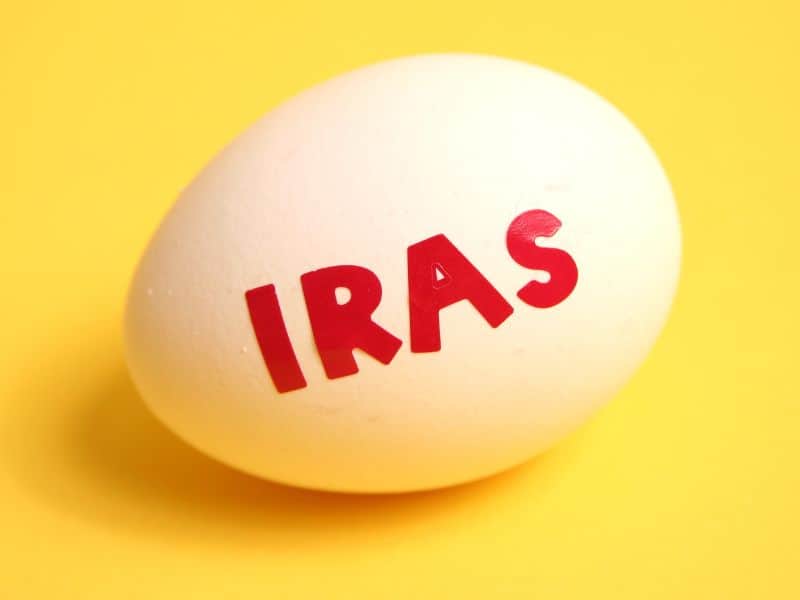What is a Traditional IRA?
A traditional IRA (Individual Retirement Account) is a type of retirement account that allows you to put money away for retirement and grows tax-deferred.
It gives you tax advantages by reducing your taxable income.
Can I Open and Contribute to an IRA?
You can open an IRA if you have taxable income or compensation during the year you make the contributions.
Also, you can not contribute to a traditional IRA if you are over the age of 70½
Taxable income or compensation that qualifies you to contribute are:
- Wages such as W-2
- Self Employment Income, such as 1099
- Profits of sales
- Alimony

Where Do I Open an IRA?
You can open an IRA account at different institutions.
- Bank
- Life insurance company
- Credit unions
- Mutual funds companies
- Online brokers
- Discount brokerage
- Robo advisors
How Do I Open an IRA?
Once you decide where you want to open the IRA, you have the option in some cases to go in-person to a branch and open the account with the help of a representative. However, all institutions have a very easily accessible way to open an account online.
All you need to open the account are the following items:
- The account number at your bank including routing number.
- Current employer’s name and address.
- Social Security number
- Date of Birth.
- Home address

How Can You Choose Your Investments?
Single Fund Option
If you are the set it and forget it type of investor, then you can select a single fund investment.
These types of funds are age-based funds and they are automatically rebalanced for you.
You will recognize these funds by their names, life cycle funds, and target-date funds
For example:
- Target date fund 2050.
- Target retirement fund 2055
- Freedom fund 2050
The asset allocations for these funds are actively managed and adjusted based on age.
Individual Securities
If you are more of a hands-on type of person, then this is the option for you.
This way can set your asset allocation based on your risk tolerance and select your stocks and bonds.
Don’t forget to rebalance at least once a year to keep your asset allocation to meet your financial needs and your risk tolerance.
What is Asset Allocation?
Asset allocation is an investment strategy that allows you to allocate and divide your investments amongst varied asset classes based on your risk tolerance and your time duration to invest.
The asset class is composed of equities (also knows as stocks), fixed income, bonds, and cash.
Asset allocation allows you to have a more diverse portfolio and reduce risks.
How Much Can I Contribute to an IRA?

For the year 2019 the IRS contribution limits have been set to:
- $6,000; For anyone up to the age of 49.
- $7,000; If you are 50 years of age or older.
Remember, you can only contribute if you have taxable income.
Also in some cases, your contributions are limited by the amount of your compensation.
For example, if you earn $5,000 in 2019, you can only contribute a maximum of $5,000, because your taxable income was $5,000.
Another thing I would like to mention is that you can contribute as little as you want too.
For example, if you only have $20 to contribute, that is
Historical IRA Contribution Limits
| Year | Contribution Age 49 & below | Catch-up Contribution Age 50 & above |
| 2019 | $6,000 | $7,000 |
| 2018 | $5,500 | $6,500 |
| 2017 | $5,500 | $6,500 |
| 2016 | $5,500 | $6,500 |
| 2015 | $5,500 | $6,500 |
| 2014 | $5,500 | $6,500 |
| 2013 | $5,500 | $6,500 |
| 2012 | $5,000 | $6,000 |
| 2011 | $5,000 | $6,000 |
| 2010 | $5,000 | $6,000 |
| 2009 | $5,000 | $6,000 |
| 2008 | $5,000 | $6,000 |
| 2007 | $4,000 | $5,000 |
| 2006 | $4,000 | $5,000 |
| 2005 | $4,000 | $5,000 |
| 2004 | $3,000 | $3,500 |
| 2003 | $3,000 | $3,500 |
| 2002 | $3,000 | $3,500 |
| 2001 | $2,000 | $2,000 |
| 2000 | $2,000 | $2,000 |
When can I Contribute to an IRA?

Contributions to an IRA can be made during the calendar year and up until the tax filing deadline.
For example, for the year 2019, you can make contributions during the entire 2019 year and up to the tax filing date is April 15, 2020.
What are the Benefits of a Traditional IRA?
- Tax deduction: The money you contribute to an IRA is completely deductible or partially deductible.
- The monies on your IRA grow tax-deferred, including gains, dividends, and earnings. They are not taxed until you take the money out. This event is called a distribution.
- The account is protected from creditors.
When Can I Withdraw Money From an IRA?
If you are over the age of 59½ you can withdraw monies from your IRA account with no penalties.
However, this money will be taxable at your current income tax bracket.
Depending on the tax bracket you fall you may not pay any taxes at all.
It is important to note that you can always take money out of your IRA at any time.
Even if you are under the age of 59½. However, you will have to report the distribution as taxable income.
Also, you will be subject to a 10% tax penalty.
There are a few exemptions to this rule, The IRA will wave the 10% early withdrawal penalty for the following situations :

1. Hardship Withdrawal Exemption
You can make a penalty free withdrawal to pay for uncovered medical expenses.
It can not exceed more than 10% of your AGI (Adjusted Gross Income)
2. Disability Exemption
If you get declared permanently disabled you can take a penalty free distribution.
For example, if you are claiming social security disability.
3. Education Exemption
If you have “qualified education expenses” for higher education, AKA College and above, l for you or any family member you claim on your taxes then you can make a penalty free withdrawal.
Qualifying expenses include:
- Tuition
- Administrative fees
- Books
- Room and Board (if the student is full time)
- Equipment (such as laptops)
- Special needs expenses
4. Home-Buyers Exemption
If you are a first time homeowner you can take a distribution penalty free.
However, there is a lifetime limit of $10,000.

What are Required Minimum Distributions?
Required Minimum Distributions are also known as RMD.
These are the mandatory minimum withdrawals that the account owner has to make every year after they reach the age of 70½.
When Do I Have to Take Required Minimum Distributions?
Yes, you have to take RMD’s after you reach the age of 70½.
You can not keep the money in the account forever without taking any distributions.
The beginning date for your first required minimum distribution is April 1 of the year after you turn 70½.
The only account that allows you to NOT take RMD’s and keep your money growing indefinitely is the Roth IRA.
Can I Withdraw More Than the RMD?
Yes, you can take out as much as you want.
It is worth mentioning to keep an eye on the amount you take out since it will be taxable at your current tax rate at the time of distribution.
Is a Traditional IRA the Same as a 401k?
No, an IRA is not the same as a 401k.
An IRA is an Individual Retirement Account.
A 401k is an employer sponsor retirement plan.
Even though they are both retirement plans, they are not the same.
Is a Traditional IRA the Same as a Roth IRA?
No, they are not the same.
They have a lot in common but they are not equal.
They differed in their tax advantages, where the Traditional IRA is tax-deductible (you get the tax break on the year you make the contributions).
As to the Roth IRA you get to take the distributions tax-free.
Can I Have Both a Traditional IRA and a Roth IRA?
Yes, you can have both, a Traditional IRA and a Roth IRA.
Just remember that the total contributions you make for a calendar year can not exceed $6,000 (2019) for all your IRA accounts.
IRAs are the easiest and best way to start investing your money for retirement.
Especially if your employer does not offer a retirement plan.
Start investing now. Do not wait. The compounding effect you get when you start saving early is the biggest advantage you have on your side.
























